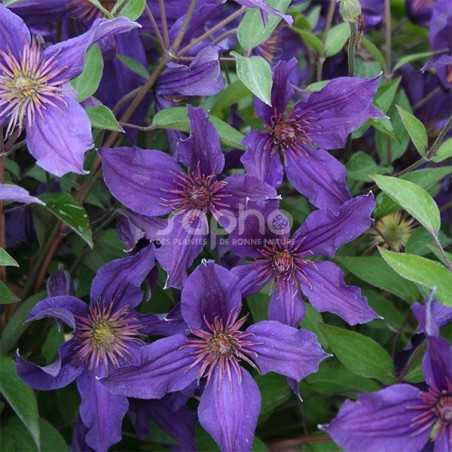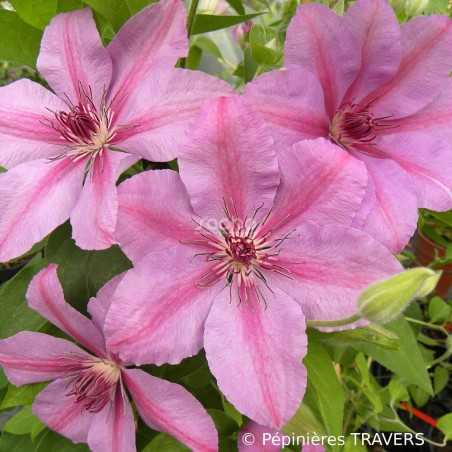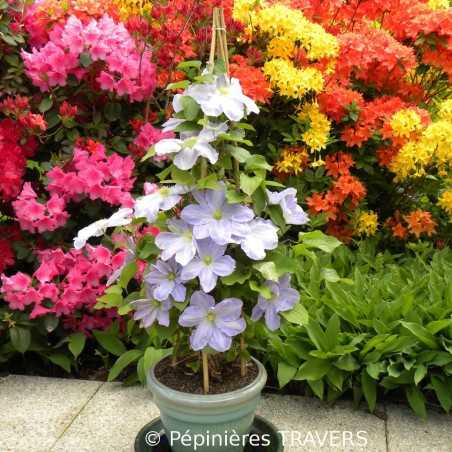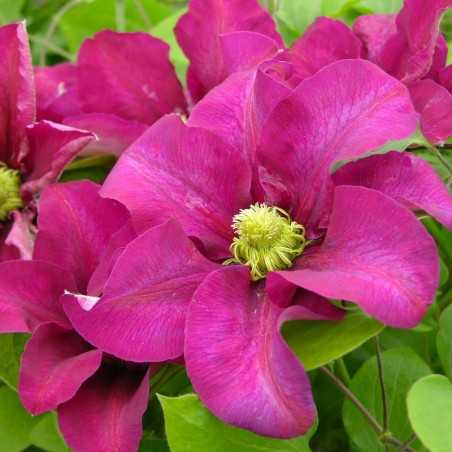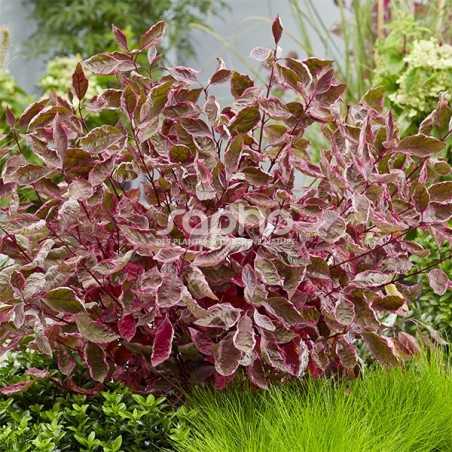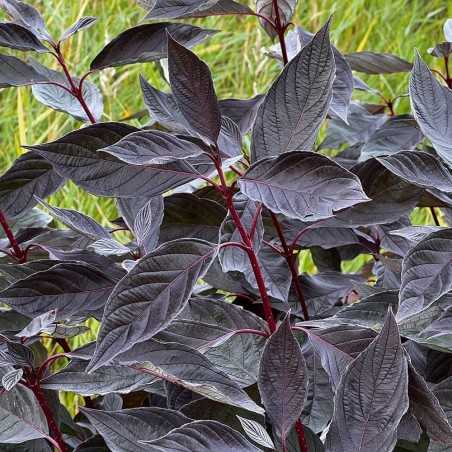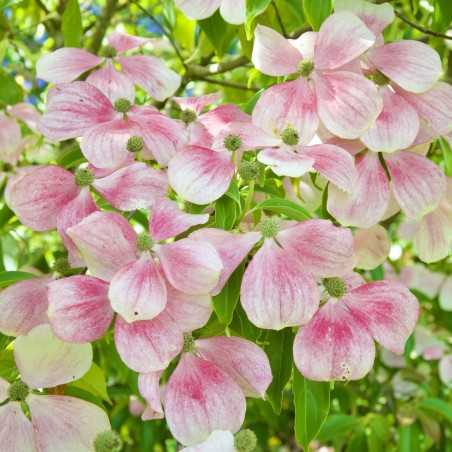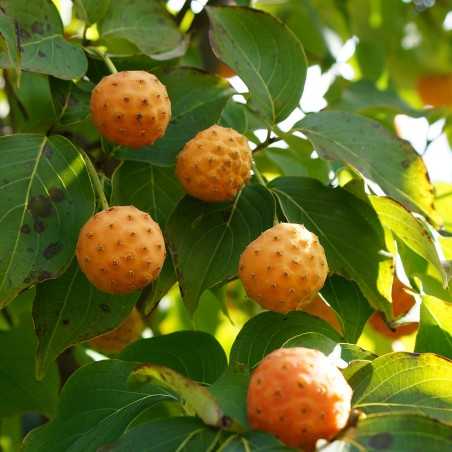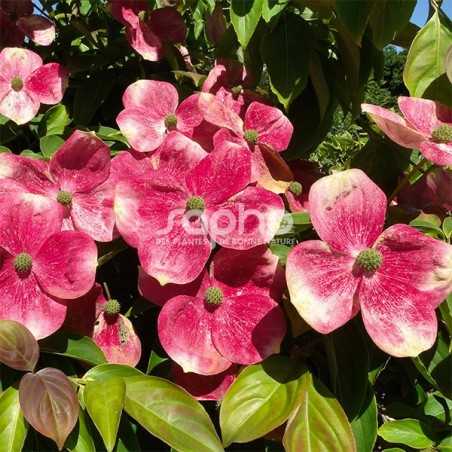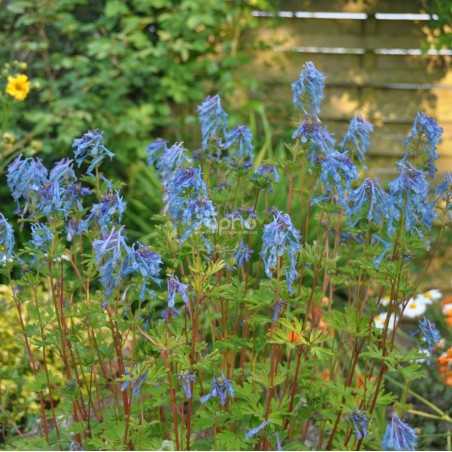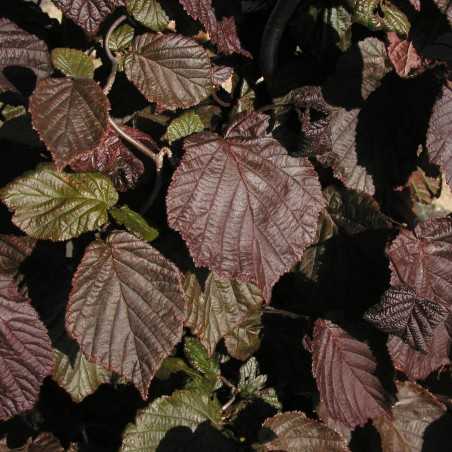All the qualities of SAPHYRA® clematis, with the added bonus of purple!
Clematis SAPHYRA® Violetta has violet flowers, which are darker than those of SAPHYRA® Indigo.
It is also highly branched and stocky, and grows upright.
Like all SAPHYRA®, it's easy to garden, highly resistant to disease, dryness and excess water, and doesn't need pruning as it restarts from the base every year.
It can be used as ground cover, as a border plant or in combination with a support plant.
Filter By
Foliage
Position
Categories
Menu
All our varieties
In the SUCCESS® range, a blue, very floriferous Clematis
This selection is particularly representative for the SUCCESS® range. Since its flowering starts from the bottom and goes to the top, it is well adapted to be sold as 'flowering pot plants'. In the garden it differs from other varieties of traditional Clematis that have less flowers at their base. The flowers of 12 - 16 cm in diameter of SUCCESS® Bleu de Loire develop from the end of April until June. The fine purple blue tepals form a beautiful contrast to the bordeaux-red stamens in the heart. There is a second flowering from August to October. Its habit is very compact and of moderate height (under 2.00 m). Therefore Bleu de Loire can also be used in tubs to decorate the terrace or a balcony.
Sweet pink Clematis with very compact shape. Abondant second flowering
The sweet pink flowers of SUCCESS ® Candy appear in April - May - June and renew themselves abundantly until September - October. The shape of this selection is particularly dense.
Trophies:
Bronze medal at Plantarium 2013 (Boskoop - NETHERLANDS)
Spectacular flowering, lavender blue from top to bottom, during the spring and summer months.
This variety is exceptional for its ability to flower from top to bottom and for its abundant perpetual flowering. The slightly wavy and interlinked tepals are lavender blue with a wide light blue, almost white, centre line. The 12 to 18 cm wide flowers bloom from April to September - October. The shape is very compact, the height reaches 1.50 m to 2.00 m.
Trophies:
INNOVERT ® bronze medal 2013 Nursery Category (ANGERS - France).
An original contrast : the heart and its volcano of yellow stamen on intensely red tepals
In May-June and again in September, SUCCESS ® Magenta offers an original flowering: a beautiful contrast between the intense red of the tepals, the lemon yellow of the heart and its vulcano of stamen.
A miracle of colours, all year long !
This superb variety has bright, colorful variegated foliage, which falls in autumn and reveals its highly decorative red wood in winter.
The very pink, tricolored young shoots evolve to green with creamy white and pink margins. The pink variegation returns in autumn, turning crimson to garnet-pink (even more intense in colder climates).
It's a highly branched plant, which structures very well and looks great in pots.
Year round attractive and spectacular autumn colours
Dark green spring leaves,
Foliage turns dark purple in summer, ending black at fall
Velvety grey hue on the foliage, especially on the underside, highlights the dark plant
Red stems in autumn/ winter
More upright growth than other Cornus alba, can be used as hedge
Robust, easy-growing, little-maintenance, can adapt to various soil, dry or moist
The great elegance of Cornus hongkongensis mixed with cornus kousa's assets
This Cornus has larger, more colorful flowers, evolving from ivory to pink, then light red. Fruits are twice as large, green, then turning red.
What's more, it stands out for its young shoots and coppery winter foliage, which add a touch of originality!
It's a vigorous plant, with an upright habit and flexible side branches, which is easy to grow and forms perfectly on an axis.
Perfectly adapted to mild climates, it's a real showstopper in the garden!
The elegance of Cornus is enhanced by the originality of its fruit
This variety blooms abundantly with white flowers from late May to early June.
Its decorative fruits, visible from afar, have original colors: yellow evolving into pumpkin-orange when ripe.
Its foliage also changes from green to orange-yellow in autumn.
This large shrub is easy to grow and has a flared habit when young.
Ideal as an isolated plant in the garden.
Spectacular for the size, abundance and changing color of its flowers!
This Cornus is distinguished by its longevity and abundant flowering. Its flowers change color with the seasons, from light salmon to bright pink to red.
In autumn, large red berries appear and persist until hard frost.
Its shape makes it ideal for production.
Its vigor and upright form with flexible branches make it an ideal shrub or small tree for large gardens and landscaped parks.
nb: color evolution may vary according to region and climate.
The pleasure to plant a Corydalis!BLUE LINE® is a real innovation among the Corydalis, due to its long and generous flowering period, which under good conditions can be nearly non-stop from spring to autumn. The spur-shaped flowers of about 35 mm, grow in regularly spaced tiers of thick clusters, carried by numerous reddy brown upright stems. They are deep metallic blue with a white throat and develop a sweet honey-like scent. Flowering begins at the end of April - beginning of May and under good conditions, continues abundantly until September - October, the last clusters of flowers last up to the first frosts. This variety is the result of a cross between C. flexuosa and C. elata. It produces an attractive mat of tender green, lobed foliage which is more vigorous than that of either of its parents. Like the flowers, the leaves remain attractive until the first frosts when the plant takes its winter break.In containers or in the garden - find the pleasure of planting Corydalis again, with this very strong and prolific flowerer.
The corkscrew hazel with purple foliage.This variety combines the charm of the corkscrew hazel and the quality of the foliage of the purple hazel. With a height of about 2,00 to 2.50 m when fully grown, 'Red Majestic' has a good vegetation and similar characteristics as those of the Corylus avellana 'Contorta'. The very purple colour of the foliage during the budding stage and the early spring fades during the summer to a greener shade, depending on the position.The flowers as catkins, in March, are also purple; so is the husk of the fruit, more or less.

